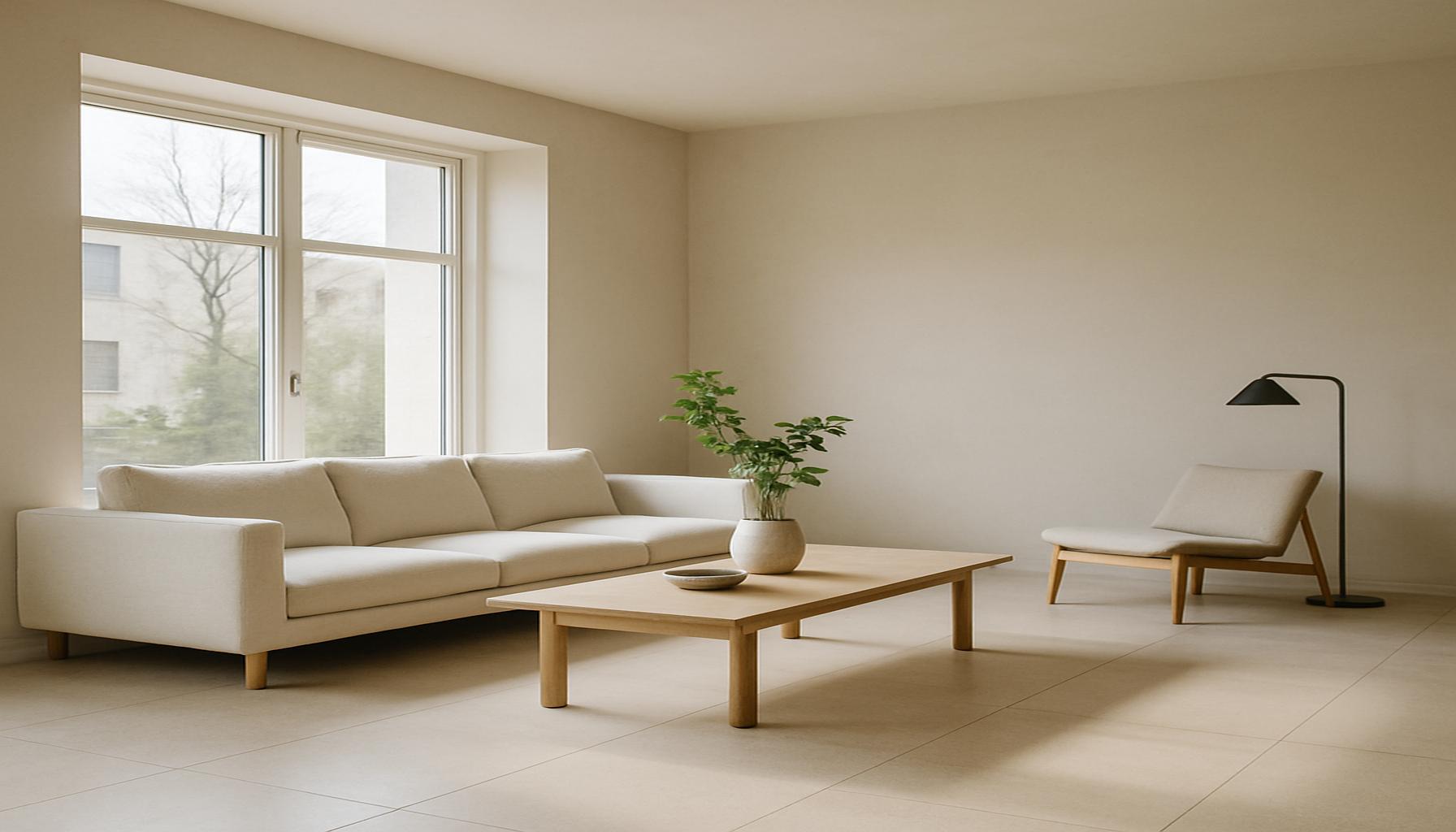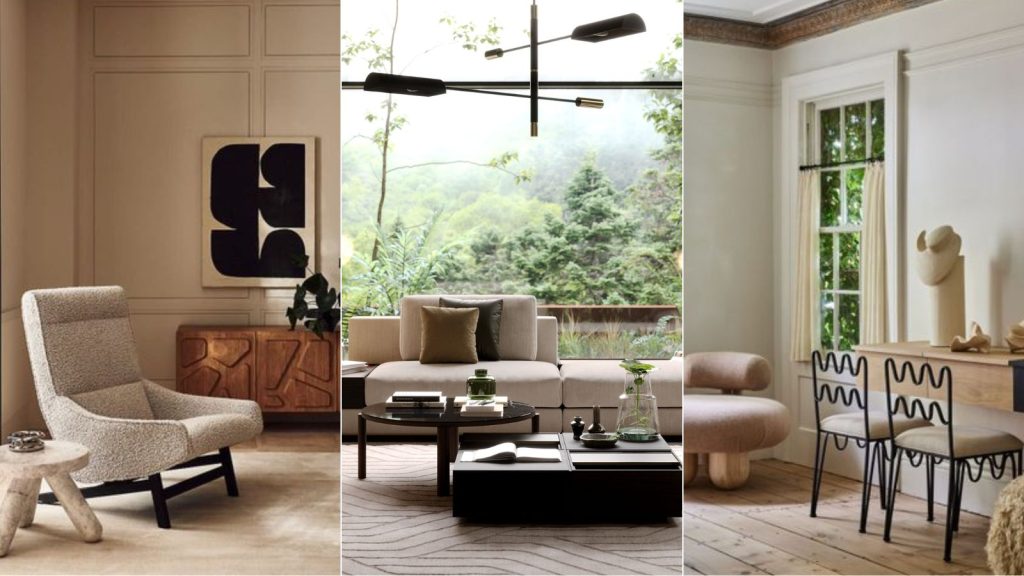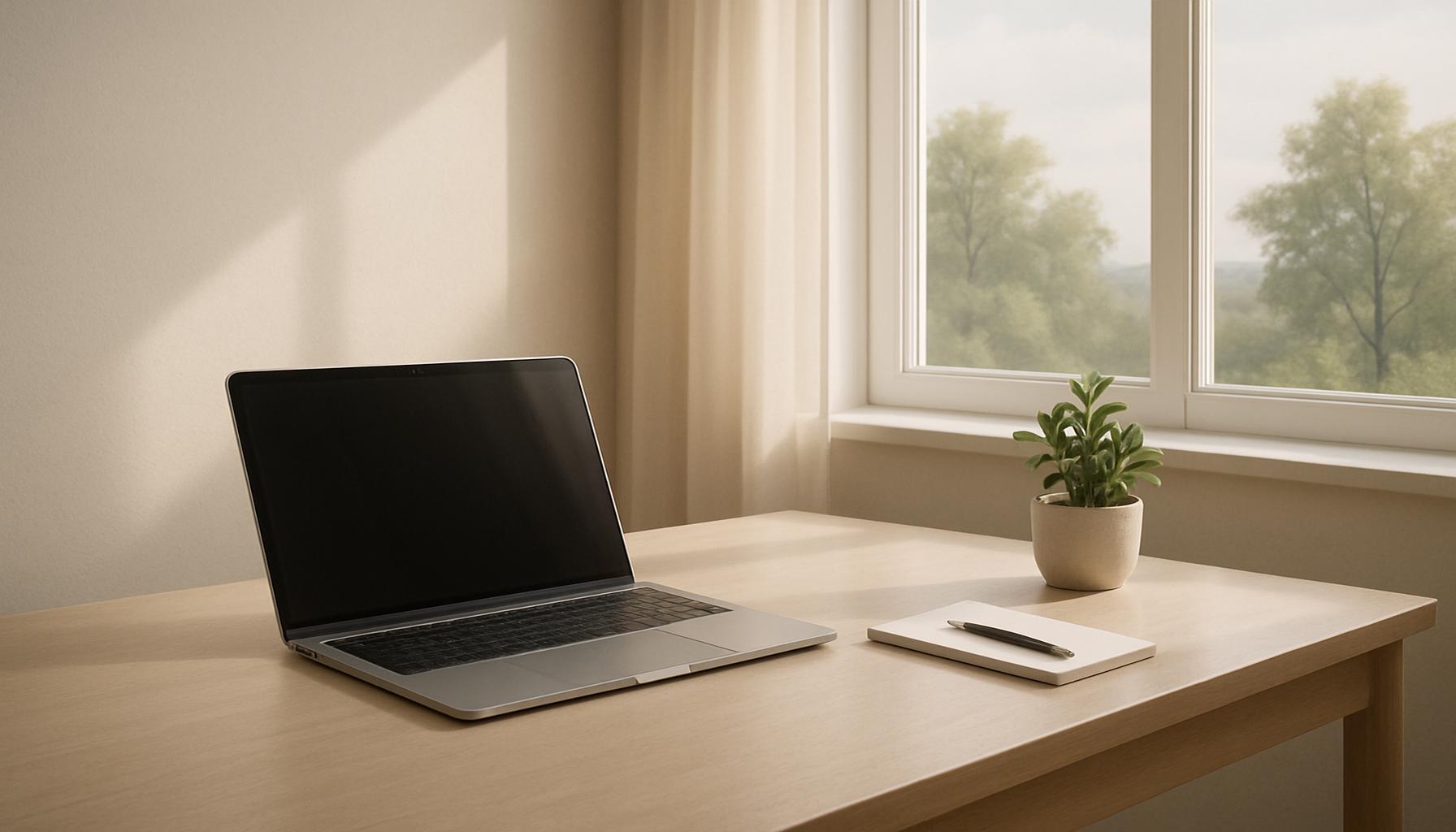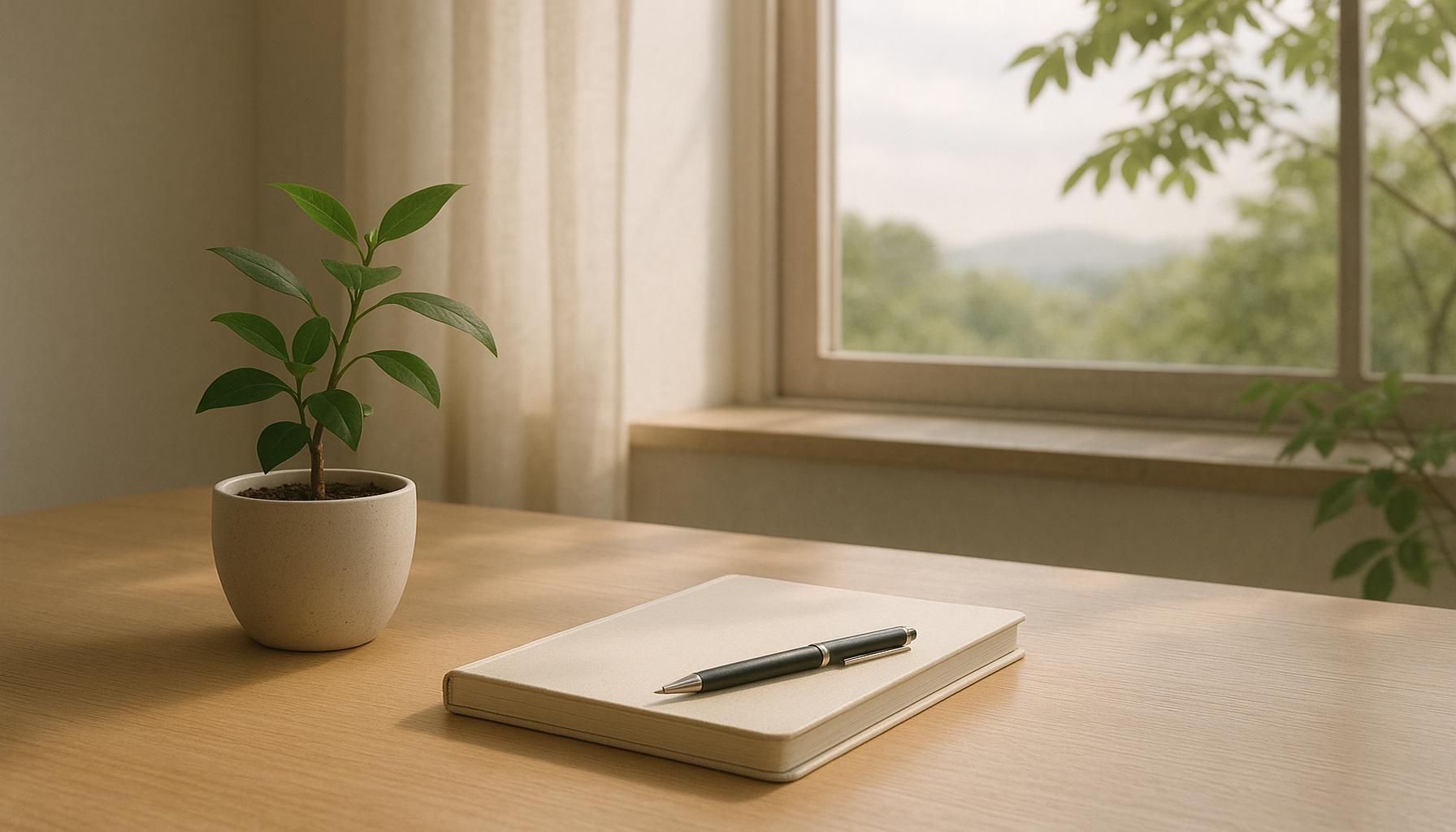The Importance of Prioritizing Spaces in a Minimalist Home: Creating Functional and Peaceful Environments

Unlocking the Power of Space in Minimalist Living
In today’s fast-paced world, the concept of minimalism has gained significant traction, appealing to those who seek clarity and calm amidst the chaos of daily life. A minimalist home is designed to emphasize functionality and peace by strategically prioritizing spaces. This intentional approach can transform ordinary living environments into serene sanctuaries that promote well-being.
Understanding the importance of prioritizing spaces involves recognizing key elements that contribute to the overall experience of a home. For instance:
- Decluttering: This is the foundation of minimalism. By removing unnecessary items, homeowners not only enhance the visual appeal of their spaces but also create an environment that reduces mental clutter. Studies have shown that clutter can increase cortisol levels, leading to heightened stress. Regularly assessing belongings and opting for a ‘one in, one out’ rule can help maintain a tidy space.
- Multi-functional furniture: Investing in pieces that serve more than one purpose is a hallmark of minimalist living. Think of a sofa that converts into a guest bed or a coffee table featuring hidden storage. These versatile items maximize space while minimizing the number of objects in a room, thus creating a more fluid living area suitable for various activities.
- Natural light: Maximizing windows and incorporating open spaces is essential in promoting a calming ambiance. Natural light not only enhances the aesthetic quality of a room but also affects mood and productivity. Homes designed to harness sunlight—such as those with open floor plans or strategically placed mirrors—can create a warm, inviting atmosphere that encourages relaxation and creativity.
These elements work synergistically to develop environments that not only look appealing but function efficiently. By employing these principles of minimalism, homeowners can cultivate spaces where clarity and tranquility are paramount. The ambiance of a home significantly influences its inhabitants, as the environment can serve as an extension of one’s mental state.
As you explore the value of minimalism, it is important to consider how prioritizing spaces can lead to emotional well-being. Research indicates that a well-organized home can greatly impact mental health, fostering a sense of control and peace. The act of simplifying one’s surroundings can also inspire emotional resilience and independence.
This article will delve into practical strategies that can help you embrace a more minimalist and fulfilling living experience. By examining how small changes can make a substantial difference, readers may find inspiration to transform their own spaces into not only a living area but a genuine haven.

DISCOVER MORE: Click here for essential tips
Establishing Intentional Spaces for Enhanced Living
At the heart of minimalism lies the principle of intentionality. This philosophy encourages individuals to carefully consider the purpose and design of each area within their home. By doing so, homeowners can cultivate spaces that not only serve essential functions but also promote a sense of calm and tranquility. Prioritizing spaces allows for the creation of environments that resonate with the mind and soul, ultimately enhancing overall well-being.
One way to establish intentional spaces is by embracing the concept of zoning. Zoning involves designating specific areas within your home for particular activities. This can help reduce distractions and create a more focused atmosphere. For example, separating workspaces from relaxation areas fosters productivity and leisure while preventing overlap that can lead to stress. Here are some zoning strategies to consider:
- Define areas: Use furniture arrangements or area rugs to delineate different zones, such as a reading nook, workspace, or meditation corner, ensuring each area serves its designated purpose.
- Color schemes: Utilize a consistent color palette throughout your home to create a harmonious look while subtly encouraging different moods in various spaces (e.g., calming blues for bedrooms and invigorating yellows for creative spaces).
- Lighting variations: Incorporate different lighting techniques—task lighting for work and soft, ambient lighting for relaxation—to support the functional needs of each zone.
Another crucial aspect of prioritizing spaces is the incorporation of nature. Biophilic design emphasizes the connection between humans and nature, effectively contributing to a peaceful home environment. Integrating natural elements—be it through plants, water features, or natural materials—can enhance air quality and promote a sense of well-being. In fact, studies indicate that having indoor plants can reduce stress levels and boost mood, making them a worthwhile investment for those creating a minimalist oasis.
Furthermore, the selection of decor should align with the minimalist ethos. Adorning your walls and surfaces with meaningful objects creates a sense of identity without overwhelming the senses. Consider creating a gallery wall with a curated selection of photos or artwork that resonates with you, rather than scattering mementos throughout your home. This focused approach emphasizes the importance of quality over quantity, reinforcing the core principle of minimalism.
In summary, prioritizing spaces in a minimalist home is an essential strategy for crafting functional and peaceful environments. By thoughtfully zoning areas for specific activities, incorporating nature into design, and maintaining a curated selection of decor, homeowners can achieve an aesthetic that promotes serenity and well-being. As we continue to explore the significance of space, it is vital to acknowledge how these conscious design choices can greatly impact mental health, fostering a sense of clarity and purpose in one’s living environment.
When delving into the significance of prioritizing spaces in a minimalist home, it’s essential to recognize how thoughtful organization transcends mere aesthetics, significantly impacting daily wellbeing. A well-structured home embodies the very essence of functionality and tranquility. Every item serves a purpose, while spaces are designed to foster a sense of calm and ease.In minimalist design, the principle of “less is more” doesn’t merely reflect a stripped-down aesthetic; it encourages thoughtful curation of possessions and furniture. Each choice amplifies the home’s function, allowing inhabitants to engage more deeply with their environment. For instance, a serene reading nook can be crafted by placing a comfortable chair and ample lighting in a quiet corner, creating a personal retreat that enhances focus and relaxation.Moreover, prioritizing open spaces can significantly improve airflow and light, resulting in a healthier living environment. Natural light increases energy levels, while decluttered areas promote a sense of spaciousness, reducing feelings of anxiety associated with overcrowding. As research suggests, minimalist environments can lead to improved mental clarity and higher productivity, reflecting the powerful connection between our surroundings and mental health.Furthermore, when materials and colors are carefully chosen, they contribute to the cohesive atmosphere of a minimalist home. Soft, neutral tones can create a backdrop for tranquility, while sustainable materials evoke a sense of harmony with the environment. This thoughtful layering of elements not only enhances the aesthetic but also promotes an eco-friendly lifestyle, aligning personal values with design choices.Ultimately, the benefits of a well-prioritized minimalist home extend beyond mere appearance. They foster a nurturing environment conducive to creativity, calmness, and clarity. Individuals seeking peace in their living spaces should explore the depths of minimalist design, discovering how intentionality in space can transform their home into a sanctuary. To further explore the multifaceted advantages of minimalist living, consider the balance between function and design, which can elevate rooms from mere living spaces to enriching environments.
DISCOVER MORE: Click here to enhance your productivity
Creating Flexible Spaces for Adaptive Living
In addition to establishing intentional spaces, another essential component of a minimalist home is the creation of flexible spaces that adapt to the changing needs of its inhabitants. This concept is particularly valuable in today’s fast-paced world, where the roles we play can shift rapidly. Emphasizing versatility in the design and functionality of each area allows homeowners to effortlessly transition between tasks, enhancing overall productivity while maintaining a serene atmosphere.
One effective strategy for achieving flexibility is to incorporate multi-functional furniture. Pieces like ottomans with hidden storage, foldable desks, or expandable dining tables not only save space but also allow for a variety of uses. For instance, a dining table can easily transform into a workspace, providing a seamless solution during those days when home office duties are necessary. This multifunctionality ensures that every area in a minimalist home is optimized to serve more than one purpose, creating a dynamic environment that suits the rhythm of modern living.
- Modular design: Consider choosing modular furniture that can be rearranged according to your needs. A sectional couch, for example, can be reconfigured for hosting gatherings or creating a cozy reading nook. This adaptability encourages engagement and fluidity in the space.
- Transformable areas: Implement movable partitions or curtains to redefine spaces as needed. This approach provides a sense of privacy when required—such as during work projects— while allowing for openness during social gatherings.
- Layered decor: Utilize decor elements that can be easily changed based on the season or your mood. For instance, swapping out cushions or artwork can breathe new life into a space without the need for a complete overhaul.
Moreover, the connection between organization and prioritization of space cannot be understated. A clutter-free environment is central to minimalism, and organizing your belongings is a critical step in achieving this goal. Implementing smart storage solutions—like built-in shelving units and under-bed storage—can help keep your possessions neatly tucked away, allowing both functionality and aesthetics to shine. Consider the following organization tips:
- Vertical storage: Make use of wall space by adding shelves or hanging organizers. This not only creates a visually appealing setup but also frees up valuable floor area.
- Regular decluttering: Schedule periodic purges to ensure your environment remains aligned with the minimalist philosophy. Keep only what is necessary and bring joy, as advocated by Marie Kondo.
- Accessible systems: Design storage solutions that make it easy for you to find and access what you need. Clear containers or labeled bins can streamline your routines and enhance the functionality of your home.
Additionally, the integration of technology plays a pivotal role in optimizing spaces within minimalist homes. Smart home devices—such as automated lighting and climate control, as well as virtual assistants—can simplify daily tasks and contribute to a more serene living environment. The ability to customize and control various aspects of your home through technology empowers you to create a space that is not only aesthetically pleasing but also highly functional.
As we navigate the complexities of daily life, prioritizing flexible and organized spaces in a minimalist home becomes paramount. By leveraging multi-functional furniture, adaptive design, and smart organization, homeowners can establish environments that respond to their evolving needs, all while fostering an atmosphere of peace and tranquility. This conscious approach to space encourages a modern lifestyle rooted in simplicity, enabling individuals to flourish in their surroundings.
DISCOVER MORE: Click here to enhance your digital life
Conclusion: Embracing the Power of Minimalism
In conclusion, the significance of prioritizing spaces in a minimalist home cannot be overstated. By consciously designing our living environments, we create not just aesthetic appeal but also a functional and peaceful atmosphere that caters to our daily lives. The journey toward minimalism invites us to reassess our relationship with our possessions, encouraging resilience against the clutter that often overwhelms modern living.
As we have examined, integrating flexible design through multi-functional furniture and adaptable spaces empowers us to shift seamlessly from one task to another, transforming our homes into dynamic sanctuaries. The addition of smart organization tactics further enhances this functionality, ensuring that our belongings support rather than hinder our lifestyle choices.
Moreover, the infusion of technology into our minimalist homes provides an added layer of convenience, allowing us to control our environments with ease and precision. This blend of simplicity and innovation not only enhances daily routines but also fosters a sense of tranquility, vital in today’s hectic world.
Ultimately, by committing to a minimalist approach, we open ourselves up to a lifestyle that values quality over quantity, presence over distraction. As you embark on your journey toward prioritizing spaces in your home, consider the potential for transformative change that this philosophy can bring. Take the time to evaluate how each area serves your needs and cultivate environments that reflect your true essence, while promoting peace and functionality.
With every intentional choice you make, you can instill a profound sense of purpose within your home—an inviting space where clarity reigns and tranquility thrives.


